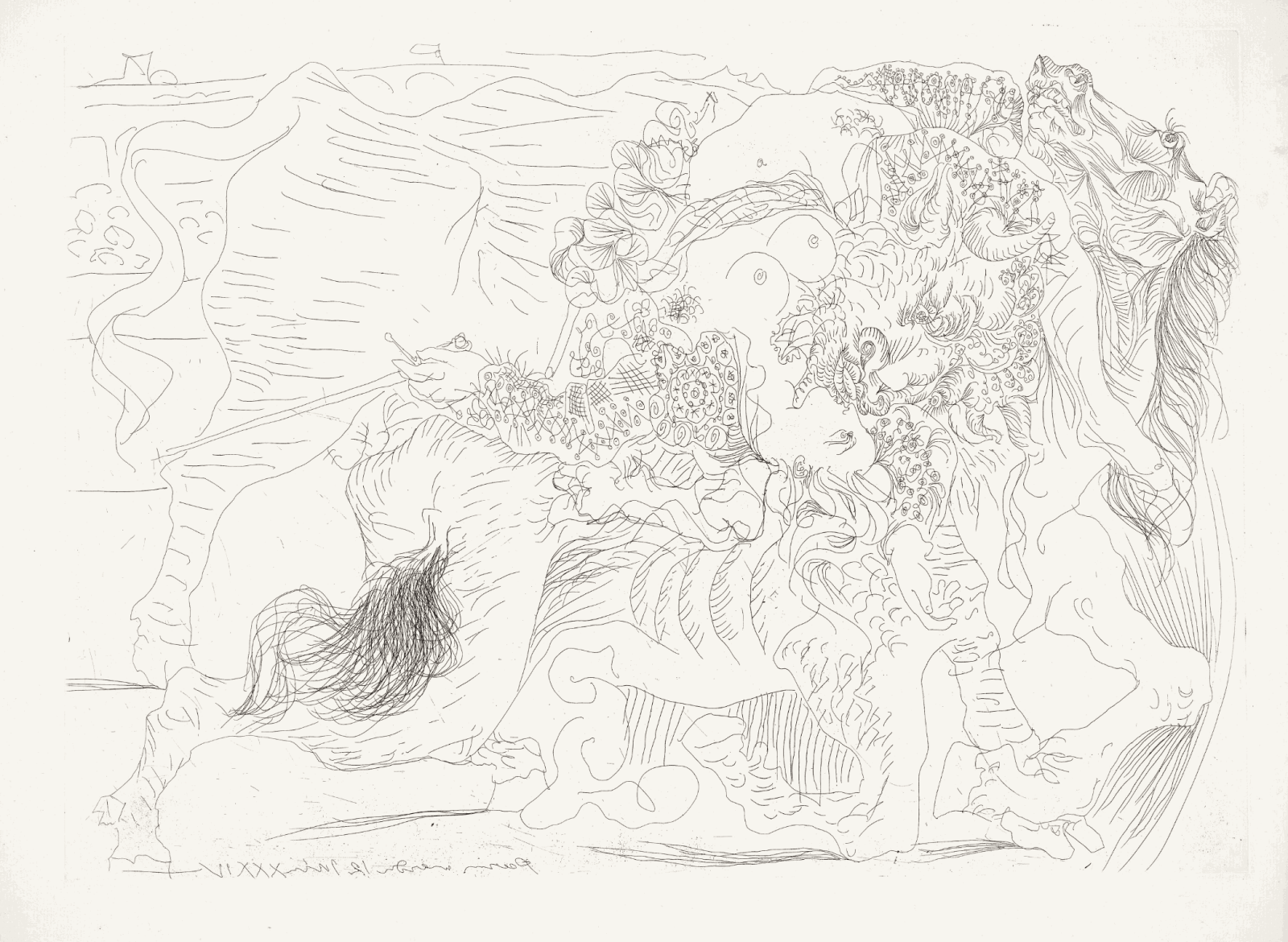Pablo Picasso Spanish, 1881-1973
Sheet: 57.1 x 77.5 cm
The edition, of which Vollard planned 50 proofs, was never delivered or paid for due to the death of the great Parisian art dealer. Only a few (four or five) proofs, sold by Lacourière, were signed by Picasso.
Provenance
Studio of Lacourière, Paris.
Galerie de l'Institut, Paris.
Private collection, New-York.
Exhibitions
Deborah Wye, « A Picasso Portfolio, Prints from the Museum of Modern Art », ed. The Museum of Modern Art, New-York, 2010. - ill. p. 66. ( n°41 du catalogue d’exposition).
Picasso Toros y Toreros : Paris (France), Musée national Picasso, 06 avril 1993-09 janvier 1994. La cime du rêve - Victor Hugo et le surréalisme : Paris (France), Maison de Victor Hugo, 16 octobre 2013-16 février 2014.
Picasso et l'exil (Picasso-Méditerranée) : Toulouse (France), les Abattoirs, Musée - Frac Occitanie Toulouse, 14 mars 2019-25 août 2019.
Literature
Bloch n°1329, illustré en grand.
Baer n°425
